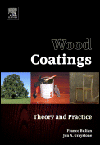Two Keynote Addresses Given at ECC Plenary Session

The opening session of the European Coatings Congress (ECC) included two keynote addresses that both focused on sustainability. The first, given by Dr. Aditya Ranade of Lux Research, was titled Assessing Sustainability in Architectural Coatings. Ranade noted that it is difficult to distinguish what is truly sustainable and what is “greenwashed” technology. He noted that it is important to define sustainability along three different parameters – resource efficiency, energy efficiency and environmental impact.
The presentation revealed a tool Lux Research uses to assess the true sustainability value of established and emerging coatings technologies, and the sustainability value relative to their performance value to the end user. A Sustainability Grid illustrated the challenges in balancing sustainability and end-user value. “Win-Win” technologies offer both sustainability and technology value; “Voluntary Adoption” technologies offer significant sustainability value, but are compromised on either cost or performance; “Endangered Technologies” have both a negative sustainability impact and questionable technical value; and “Survivor” technologies provide enough technical value to fight rising regulations.
Ranade plotted various technologies to show where they fall along these definitions. Light-reflective paint technology, 100%-solid powder coatings, paint recycling, UV-curable coatings, chromate-free anti-corrosion technology and self-healing coatings were a few technologies that fell into the win-win category. Voluntary adoption technologies include bio-based binders and solvents, solar paints and elastomeric cool-roof coatings. Waterborne acrylic coatings fell under the endangered technologies category; and enhanced-hiding coatings, low-VOC surfactants and waterborne epoxy coatings all fell right on the line between survivor and win-win technologies.
Ranade also showed an Innovation Grid, which provided a reality check for adoption challenges and a timeline. Technologies that are “Current Winners” are widely deployed today. “Future Winners” have great potential but face significant adoption hurdles. “Long Shots” are technologies that are immature and have questionable technology value. “Faded Incumbents” are technologies that are well established but are commoditized, with little scope for differentiation.
Current Winners include light-reflective paints, low-VOC surfactants, enhanced hiding power, paint recycling and elastomeric cool roofs. Future Winners are thermally responsive cool roofs, chromate-free anti-corrosion technology, UV-curable coatings, self-healing coatings and 100%-solid technology. Long Shots are solar paints, and Faded Incumbents include waterborne polyurethane and waterborne acrylic technologies.
The second keynote address was given by Dr. Klemens Bartmann of Axalta Coating Systems and was titled Sustainable and Functional Coatings – Challenges and Opportunities. His talk focused on transportation coatings and stressed that sustainability is more than just meeting environmental regulations and reducing your carbon footprint. Sustainability also means providing higher quality and increased functionality (in the form of appearance, scratch resistance, easy-to clean, smart coatings), lowering process costs and increasing productivity (with consolidated processes), and finding a balance between product/process standardization and product differentiation (mixing concepts).
Sometimes carbon footprint/emission reduction, lightweight capability and process consolidation will lead the way to environmental sustainability, but might also lead to additional complexity and cost. Further implementation of environmental regulations will greatly impact the way we design, produce, package and apply coating materials in this highly competitive market. Bartmann stressed that it is not enough to reduce complexity; we must manage complexity with smart solutions.
Looking for a reprint of this article?
From high-res PDFs to custom plaques, order your copy today!





